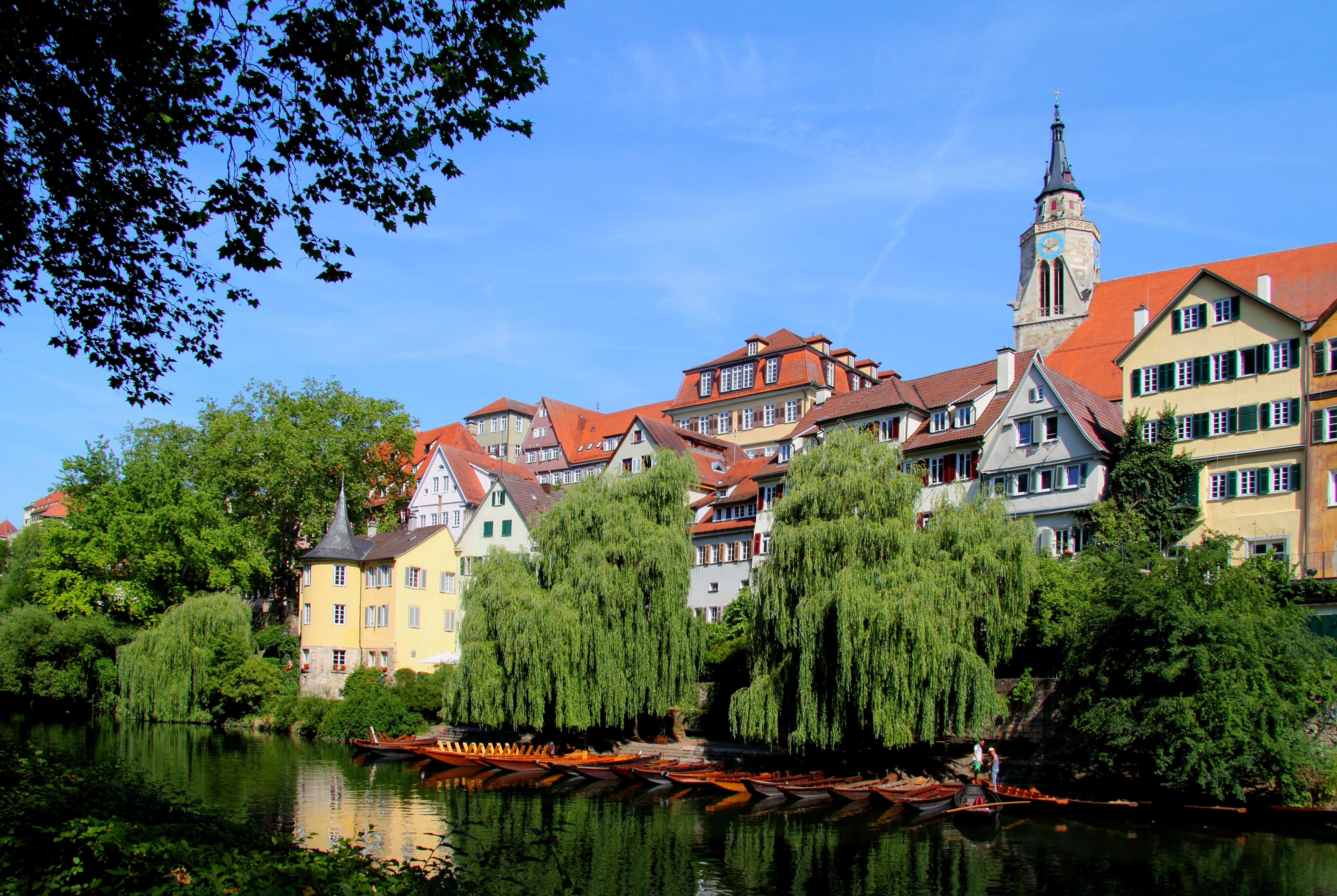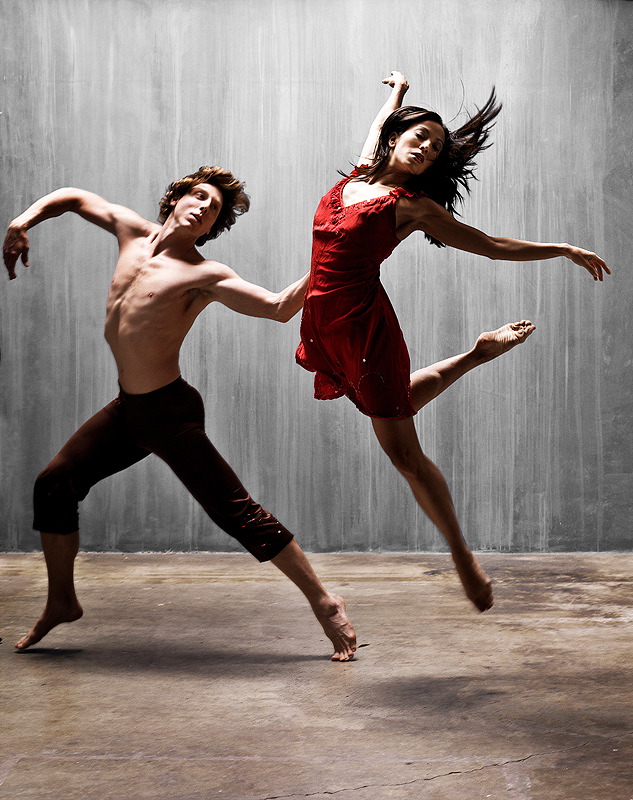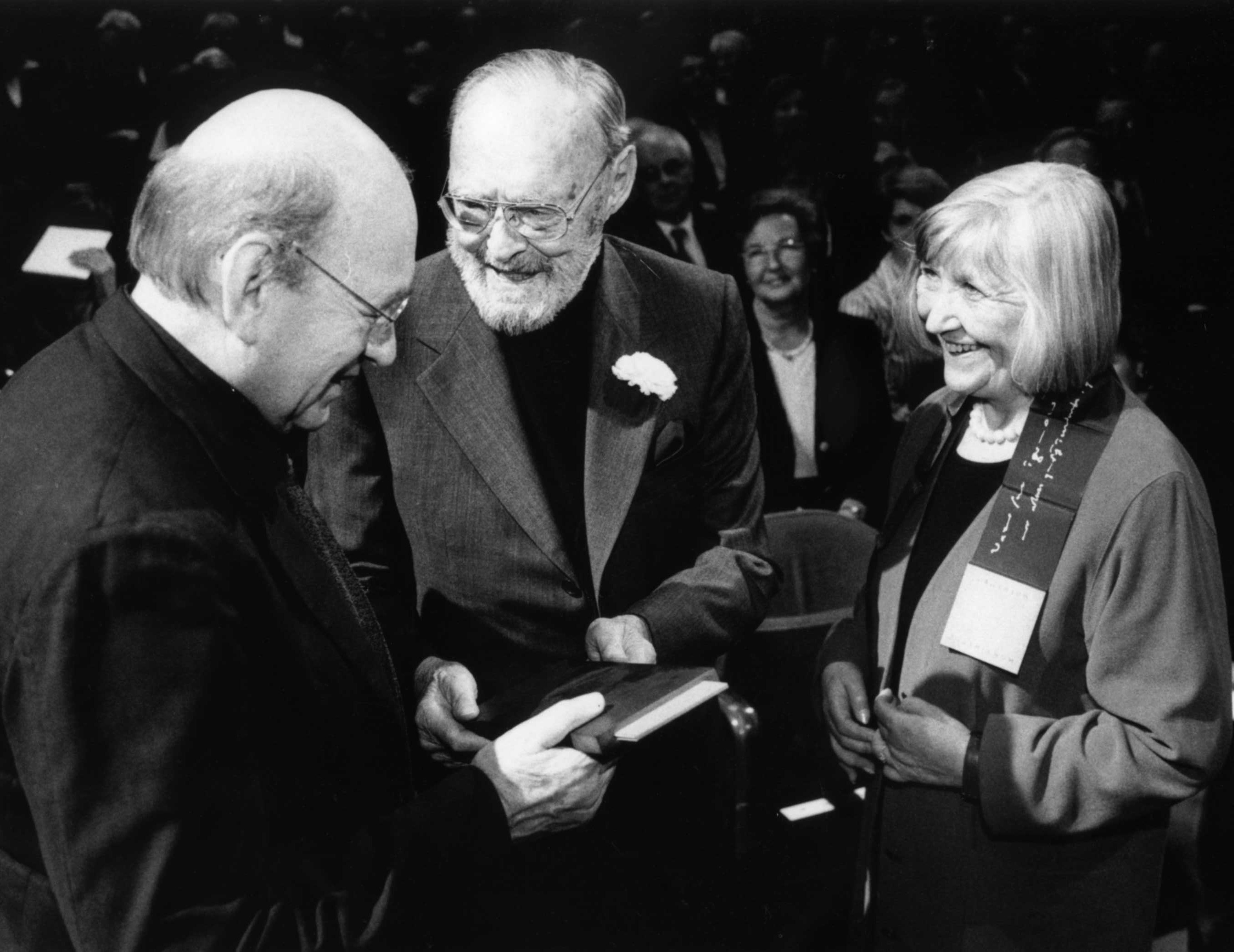|
Karl Maria Udo Remmes
Karl Maria Udo Remmes (born 2 July 1954 in Tübingen, West Germany – 25 November 2014 in Köln) was a German photographer and physician. He has become known especially for his work in backstage photography specializing in opera, ballet and musicals. The leading idea of Remmes' photographic work is not the documentation – he wants to capture the moments when the hard work of acting transmutes into art. Education After studying biology and medicine, Remmes did his medical doctorate in 1986 in neuroradiology, and became a consultant radiologist specialized in cross sectional imaging. He was awarded a Graduation in Professional Photography by the New York Institute of Photography. Career Remmes' first photo exhibition "Operaria" at the University of Düsseldorf presents a portrait of backstage operations of the Deutsche Oper am Rhein. Remmes worked at various European opera and ballet theatres such as the Teatro Regio of Turin, the Graz Opera, the English National Opera ... [...More Info...] [...Related Items...] OR: [Wikipedia] [Google] [Baidu] |
Tübingen
Tübingen (, , Swabian: ''Dibenga'') is a traditional university city in central Baden-Württemberg, Germany. It is situated south of the state capital, Stuttgart, and developed on both sides of the Neckar and Ammer rivers. about one in three of the 90,000 people living in Tübingen is a student. As of the 2018/2019 winter semester, 27,665 students attend the Eberhard Karls University of Tübingen. The city has the lowest median age in Germany, in part due to its status as a university city. As of December 31, 2015, the average age of a citizen of Tübingen is 39.1 years. The city is known for its veganism and environmentalism. Immediately north of the city lies the Schönbuch, a densely wooded nature park. The Swabian Alb mountains rise about (beeline Tübingen City to Roßberg - 869 m) to the southeast of Tübingen. The Ammer and Steinlach rivers are tributaries of the Neckar river, which flows in an easterly direction through the city, just south of the medieval old ... [...More Info...] [...Related Items...] OR: [Wikipedia] [Google] [Baidu] |
Expo 2010
Expo 2010, officially the Expo 2010 Shanghai China, was held on both banks of the Huangpu River in Shanghai, China, from 1 May to 31 October 2010. It was a major World Expo registered by the Bureau International des Expositions (BIE), in the tradition of international fairs and expositions, the first since 2005. The theme of the exposition was ''"Better City – Better Life"'' and signifies Shanghai's new status in the 21st century as the "next great world city". The Expo emblem features the Chinese character 世 ('world', Chinese "shì") modified to represent three people together with the 2010 date. It had the largest number of countries participating and was the most expensive Expo in the history of the world's fairs. The Shanghai World Expo was also the largest World's Fair site ever at 5.28 square km. By the end of the expo, over 73 million people had visited – a record attendance – and 246 countries and international organizations had participated. On 16 Octob ... [...More Info...] [...Related Items...] OR: [Wikipedia] [Google] [Baidu] |
Dance Photographers
Dance is a performing art form consisting of sequences of movement, either improvised or purposefully selected. This movement has aesthetic and often symbolic value. Dance can be categorized and described by its choreography, by its repertoire of movements, or by its historical period or place of origin. An important distinction is to be drawn between the contexts of theatrical and participatory dance, although these two categories are not always completely separate; both may have special functions, whether social, ceremonial, competitive, erotic, martial, or sacred/liturgical. Other forms of human movement are sometimes said to have a dance-like quality, including martial arts, gymnastics, cheerleading, figure skating, synchronized swimming, marching bands, and many other forms of athletics. There are many professional athletes like, professional football players and soccer players, who take dance classes to help with their skills. To be more specific professional athletes t ... [...More Info...] [...Related Items...] OR: [Wikipedia] [Google] [Baidu] |
2014 Deaths
This is a list of deaths of notable people, organised by year. New deaths articles are added to their respective month (e.g., Deaths in ) and then linked here. 2022 2021 2020 2019 2018 2017 2016 2015 2014 2013 2012 2011 2010 2009 2008 2007 2006 2005 2004 2003 2002 2001 2000 1999 1998 1997 1996 1995 1994 1993 1992 1991 1990 1989 1988 1987 See also * Lists of deaths by day * Deaths by year {{DEFAULTSORT:deaths by year ... [...More Info...] [...Related Items...] OR: [Wikipedia] [Google] [Baidu] |
German Radiologists
German(s) may refer to: * Germany (of or related to) **Germania (historical use) * Germans, citizens of Germany, people of German ancestry, or native speakers of the German language ** For citizens of Germany, see also German nationality law ** Germanic peoples (Roman times) * German language **any of the Germanic languages * German cuisine, traditional foods of Germany People * German (given name) * German (surname) * Germán, a Spanish name Places * German (parish), Isle of Man * German, Albania, or Gërmej * German, Bulgaria * German, Iran * German, North Macedonia * German, New York, U.S. * Agios Germanos, Greece Other uses * German (mythology), a South Slavic mythological being * Germans (band), a Canadian rock band * "German" (song), a 2019 song by No Money Enterprise * '' The German'', a 2008 short film * " The Germans", an episode of ''Fawlty Towers'' * ''The German'', a nickname for Congolese rebel André Kisase Ngandu See also * Germanic (disambi ... [...More Info...] [...Related Items...] OR: [Wikipedia] [Google] [Baidu] |
Photographers From Baden-Württemberg
A photographer (the Greek φῶς (''phos''), meaning "light", and γραφή (''graphê''), meaning "drawing, writing", together meaning "drawing with light") is a person who makes photographs. Duties and types of photographers As in other arts, the definitions of amateur and professional are not entirely categorical. An ''amateur photographer'' takes snapshots for pleasure to remember events, places or friends with no intention of selling the images to others. A ''professional photographer'' is likely to take photographs for a session and image purchase fee, by salary or through the display, resale or use of those photographs. A professional photographer may be an employee, for example of a newspaper, or may contract to cover a particular planned event such as a wedding or graduation, or to illustrate an advertisement. Others, like fine art photographers, are freelancers, first making an image and then licensing or making printed copies of it for sale or display. So ... [...More Info...] [...Related Items...] OR: [Wikipedia] [Google] [Baidu] |
Richard Sadler
Richard Sadler (born March 18, 1947, in Montreal, Quebec, Canada) is a producer, scenarist and film director. Biography Filmography As a producer * 1984 : '' The Gunrunner'' directed by Nardo Castillo * 1989 : '' How to Make Love to a Negro Without Getting Tired (Comment faire l'amour avec un nègre sans se fatiguer)'' directed by Jacques W. Benoit * 1991 : ''Scream of Stone'' ('' Cerro Torre: Schrei aus Stein'') directed by Werner Herzog * 1992 : ''Coyote'' directed by Richard Ciupka * 1992 : '' Le mirage'' directed by Jean-Claude Guiguet * 1994 : ''Louis 19, King of the Airwaves (Louis 19, le roi des ondes)'' directed by Michel Poulette * 1996 : ''Caboose'' directed by Richard Roy * 1997 : '' Le ciel est à nous'' directed by Graham Guit * 1998 : '' Sucre amer'' directed by Christian Lara * 1999 : ''EdTV'' de Ron Howard * 2001 : ''Karmen Geï'' directed by Joseph Gaï Ramaka * 2003 : '' Là-haut, un roi au-dessus des nuages'' directed by Pierre Schoendoerffer * ... [...More Info...] [...Related Items...] OR: [Wikipedia] [Google] [Baidu] |
Gudrun Landgrebe
Gudrun Landgrebe (; born 20 June 1950) is a German actress. Landgrebe was born in Göttingen, grew up in Bochum, and attended theatre school in Cologne from 1968 until 1971. In 1971 she made her debut at Stadttheater Bielefeld. She also appeared in ''Heimat'' as the character Klärchen Sisse. Since 1981 she has frequently appeared in German movies - her first film role was in the comedy '. In 1983 she gained international fame in the Robert van Ackerens movie '' Die flambierte Frau''. Further movies such as Istvan Szabo's ''Oberst Redl'' (1985), '' Yerma'' (1984) and Burkhard Driest's ' (1984) followed. In 1985 she appeared alongside Kevin McNally in Liliana Cavani's '' The Berlin Affair''. She appeared in 1998 in the TV movie '' Opera Ball'' with Heiner Lauterbach and Franka Potente. In 1997 she was in ', with Mario Adorf, Veronica Ferres, Heiner Lauterbach, Jan Josef Liefers and Götz George, directed by Helmut Dietl. Landgrebe has been married to Dr. Ulric ... [...More Info...] [...Related Items...] OR: [Wikipedia] [Google] [Baidu] |
Rathaus Schöneberg
Rathaus Schöneberg is the City and town halls, city hall for the Boroughs of Berlin, borough of Tempelhof-Schöneberg in Berlin. From 1949 until 1990 it served as the seat of the Abgeordnetenhaus of Berlin, state senate of West Berlin and from 1949 until 1991 as the seat of the Governing Mayor of Berlin, Governing Mayor. History The sandstone building was constructed between 1911 and 1914, when it replaced the old town hall of Schöneberg, at that time an independent city (german: Districts of Germany, Stadtkreis) not yet incorporated into Greater Berlin Act, Greater Berlin, which took place in 1920. The Nazi Germany, Nazi authorities had a series of war murals by Franz Eichhorst added to the interior in 1938. In World War II the building was severely damaged by Bombing of Berlin in World War II, Allied bombing and during the final Battle of Berlin. After the war the undestroyed ''Neues Stadthaus'', former head office of Berlin's municipal fire insurance ''Feuersozietät'', on P ... [...More Info...] [...Related Items...] OR: [Wikipedia] [Google] [Baidu] |
Bernd And Hilla Becher
Bernhard "Bernd" Becher (; 20 August 1931 – 22 June 2007), and Hilla Becher, née Wobeser (2 September 1934 – 10 October 2015), were German conceptual artists and photographers working as a collaborative duo. They are best known for their extensive series of photographic images, or typologies, of industrial buildings and structures, often organised in grids. As the founders of what has come to be known as the 'Becher school' or the 'Düsseldorf School' they influenced generations of documentary photographers and artists. They have been awarded the Erasmus Prize and the Hasselblad Award. Biography Bernd Becher was born in Siegen. He studied painting at the Staatliche Akademie der Bildenden Künste Stuttgart from 1953 to 1956, then typography under Karl Rössing at the Kunstakademie Düsseldorf from 1959 to 1961. Hilla Becher was born in Potsdam. Prior to Hilla's time studying photography at the Kunstakademie Düsseldorf from 1958 to 1961, she had completed an appre ... [...More Info...] [...Related Items...] OR: [Wikipedia] [Google] [Baidu] |
New Objectivity
The New Objectivity (in german: Neue Sachlichkeit) was a movement in German art that arose during the 1920s as a reaction against expressionism. The term was coined by Gustav Friedrich Hartlaub, the director of the ''Kunsthalle'' in Mannheim, who used it as the title of an art exhibition staged in 1925 to showcase artists who were working in a post-expressionist spirit. As these artists—who included Max Beckmann, Otto Dix, George Grosz, Christian Schad, Rudolf Schlichter and Jeanne Mammen—rejected the self-involvement and romantic longings of the expressionists, Weimar intellectuals in general made a call to arms for public collaboration, engagement, and rejection of romantic idealism. Although principally describing a tendency in German painting, the term took a life of its own and came to characterize the attitude of public life in Weimar Germany as well as the art, literature, music, and architecture created to adapt to it. Rather than some goal of philosophical obj ... [...More Info...] [...Related Items...] OR: [Wikipedia] [Google] [Baidu] |


_046.jpg)




